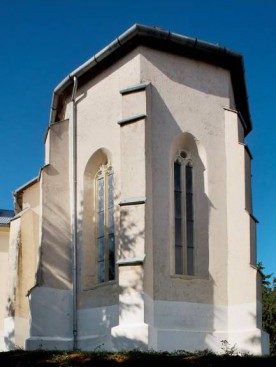The Calvinist Church – Tiszaszentmárton‘The Pannonhalma Abbey of the Nyír area’ – this is how the archaeologist, physician and anthropologist András Jósa called this church dedicated to Saint Martin and standing on one of the highest hills in its neighbourhood. A Saint Martin’s Chapel was mentioned already in 1067. Researchers presumed that the said place of worship stood on this church hill in Szentmárton, however, no archaeological evidence to support this hypothesis has ever been found. The Gothic character of the present oriented church is given by its sanctuary enclosed by several sides of a polygon and the windows on the southern frontispiece, which are decorated with traceries. The present church is the result of two medieval periods when massive construction work had been undertaken and a later refurbishment carried out during the Reformation period. During the first period, the present church took shape. It is composed of a rectangular nave covered by a flat ceiling and vaulted sanctuary enclosed by several sides of a polygon. This edifice must have been erected at the beginning of the 14th century. In the northeast corner of the sanctuary, the tabernacle was placed. The former entrance of the nave was on the southern side; the remains of the framing were uncovered in 2012. The church was modified to a very large extent at the end of the 15th and the beginning of the 16th century. The walls of the sanctuary were raised to a higher level and a new vaulting was constructed, too. This was very similar to the still extant vaulting of the Calvinist church in Tornyospálca. The nave was also raised and a new system of windows was created on the southern side. According to local tradition, István Losonczy, the count (comes parochialis) of Temes county, who heroically defended the fortress of Temesvár (Timişoara) against the Turks, was buried here. The Calvinists started using the church from the beginning of the 16th century, but have returned it for a longer period (between 1603 and 1747) to the Catholics. However, Calvinists have been using the place of worship since 1747, again. A new refurbishment was carried out at the beginning of the 19th century: a narthex and a tower were added to the southern frontispiece. The wooden tower mentioned in 1809 does not exist any more. In 2012, archaeological excavations were initiated in the nave, but the remains of the church built in the 11th century have not been found. However, a Romanesque baptistery basin carved of stone was found. The church has been restored beautifully and is presently welcoming visitors. Two Gothic style windows have been uncovered and are presented on the inside |














